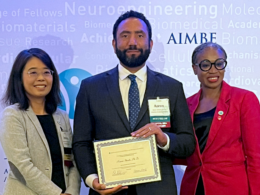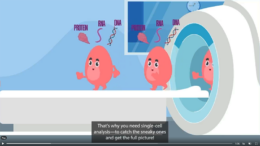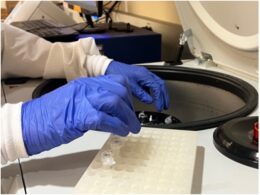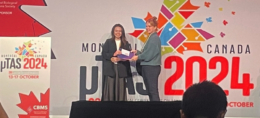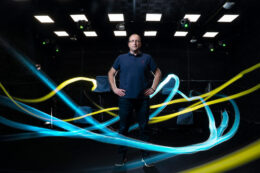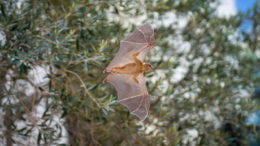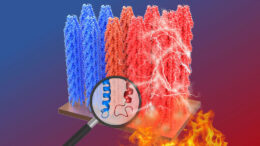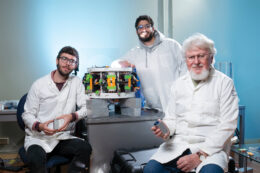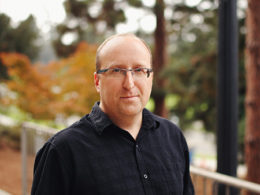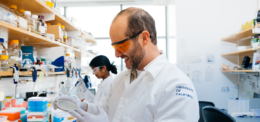Bioinstrumentation

Bioinstrumentation is one of the most familiar faces of bioengineering: the development of technologies and devices for affecting biological systems.
These include familiar medical tech like MRIs and insulin pumps as well as exciting new developments in remote health care, laboratory miniaturization and automation, and much more. Our researchers also use their device expertise to broader problems in safety and the environment, like bio-inspired pollutant sensors, energy generation and ocean health.
Research in bioinstrumentation has real-world impact in areas like:
The Environment, diagnostics, drug delivery, lab on a chip, medical imaging, neurology, Remote Health
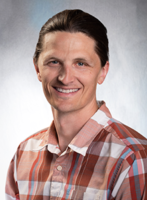
Iain Clark
For more information, see: http://clarklab.berkeley.edu/
The Clark Lab develops microfluidic and molecular methods for the high throughput analysis of single cells. We use these techniques to study HIV latency in CD4 T cells and profile cellular interactions during central nervous system inflammation.
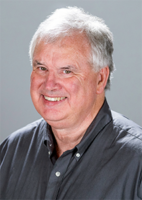
Steve Conolly
For more information, see: https://bisl.berkeley.edu/
The Conolly Lab has built the world’s highest spatial resolution MPI scanner and the only projection MPI scanner in the world. In addition, the lab has built the only 3D Projection-Reconstruction MPI scanner currently in existence.

Daniel A. Fletcher
For more information, see: https://fletchlab.berkeley.edu/
The Fletcher Lab develops diagnostic technologies and studies mechanical regulation of membrane and cytoskeleton organization in the context of cell motility, signaling, and host-pathogen interactions. We specialize in development of optical microscopy, force microscopy, and microfluidic technologies to understand fundamental organizational principles through both in vitro reconstitution and live cell experiments. Recent work includes investigating the mechano-biochemistry of branched actin network assembly with force microscopy, studying membrane deformation by protein crowding and oligomerization with model membranes, and reconstituting spindle scaling in encapsulated cytoplasmic extracts. The long-term goal of our work is to understand and harness spatial organization for therapeutic applications in cancer and infectious diseases.

Amy E. Herr
For more information, see: https://herrlab.berkeley.edu/
Use of scale-dependent phenomena to design tools for quantifying biomolecules in complex biological fluids down to single cell and sub-cellular resolution. Applications include clinical diagnostics, protein signaling + biomarker validation.
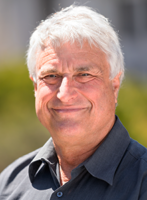
Dorian Liepmann
For more information, see: https://liepmannlab.squarespace.com/
BioMEMS, microfluid dynamics, experimental biofluid dynamics, hemodynamics associated with valvular heart disease and other cardiac and arterial flows.
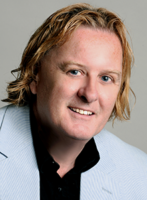
Gerard Marriott
For more information, see: https://www.marriottlab.com/
The Marriott lab is recognized for its innovative research programs at the interface of bioengineering, chemistry, and biophysics. Our technology-driven research programs are advanced through long-standing interests in the design, synthesis, and engineering of biosensors and biomaterials, and their applications to biosensing, microscope imaging, drug delivery, and wearable diagnostics.
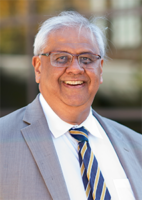
S. Shankar Sastry
For more information, see: https://robotics.eecs.berkeley.edu/~sastry
The Sastry Lab explores embedded and autonomous software, AI, robotics, computer vision, nonlinear and adaptive control and learning, robotic vehicles in the air, ground and underwater, control of hybrid systems, robotic surgery, and biological motor control and prosthetics.
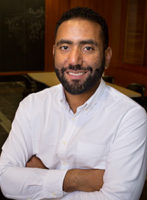
Aaron Streets
For more information, see: https://streetslab.com/
The Streets lab is interested in applying lessons from mathematics, physics, and engineering, to invent tools that help us dissect and quantify complex biological systems. Our goal is to uncover laws that govern the interactions of molecules inside the cell and the interactions between cells in a tissue or organism, by making precision measurements on single cells. In pursuit of this goal, we exploit three core technologies; microfluidics, microscopy, and genomics.
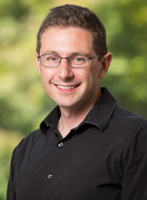
Moriel Vandsburger
We are developing novel molecular imaging diagnostics for quantitative imaging of disease physiology and gene/cell therapies using MRI as a platform technology.
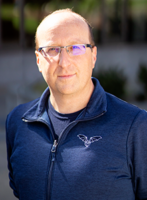
Michael Yartsev
For more information, see: https://www.michaelyartsev.com/
Our lab seeks to understand the neural basis of complex spatial and acoustic behaviors. We advance and develop technologies for studying neural activity in freely behaving and flying bats and apply those to our investigation of their neural circuits. An example is our recent development of methods for wireless recording of neural activity from freely flying bats. We plan to develop technologies for optogenetic control and imaging of neural activity in freely behaving and apply these tools in our studies. We aim to uncover basic principles of brain function that are general across mammals.
News About: Bioinstrumentation
Aaron Streets named AIMBE Fellow
Professor Aaron Streets has been named to the College of Fellows of the American Institute for Medical and Biological Engineering (AIMBE). Streets was selected for “developing innovative technology to elucidate genome regulation with single-cell and molecule resolution, and for impactful leadership to diversify bioengineering.
BlotSeq single cell sequencing – animated!
BioE postdoc Trinh Lam’s animated video explains how Herr Lab’s BlotSeq single-cell tool uses sequencing data to guide protein selection without the need to predefine targets, making the process more flexible.
Diverse paths to discovery at UC Berkeley
BioE graduate student Jazmin Isabel Velazquez examines the unique paths every graduate student takes on the road to their PhD in this story based on her experience in the Healy and Rubinsky Labs.
Herr Lab Postdoc Wins AIP Best Paper
Trinh Lam, a postdoc in Amy Herr’s lab, has won the Biomicrofluidics Best Paper Award from AIP Publishing at the 28th International Conference on Miniaturized Systems for Chemistry and Life Sciences – Micro-Total Analysis Systems (µTAS 2024).
Yartsev new HHMI Investigator
Congratulations Professor Michael Yartsev, named a Howard Hughes Medical Institute (HHMI) Investigator!
So to speak: how bats and humans communicate
Berkeley researchers led by Professor Michael Yartsev, working with scientists at Carnegie Mellon University, have identified the part of the brain in Egyptian fruit bats that controls vocalizations and found that it contains similar neural wiring and genetics to the part of the human brain that controls speech.
Putting on the heat
Professor Seung-Wuk Lee discusses pyroelectricity: the finding that viruses can generate electricity when exposed to heat, and how this may pave the way for next-generation biosensors and diagnostic tools.
Cool it down
How isochoric preservation can protect food, organs — and even the planet. Professor Boris Rubinsky discusses the state of the art in cryogenics and preservation.
Yartsev wins Boehringer Ingelheim FENS Research Award 2024
The Federation of European Neuroscience Societies (FENS) has selected Professor Michael Yartsev for the 2024 Boehringer Ingelheim FENS Research Award, given in recognition of outstanding and innovative work from all areas of neuroscience. The award will be presented at the FENS Forum conference in Vienna.
Berkeley’s ecosystem of innovation, entrepreneurship combats climate change
Professors John Dueber and David Schaffer are featured in this article highlighting campus research and entrepreneurship in sustainability.


